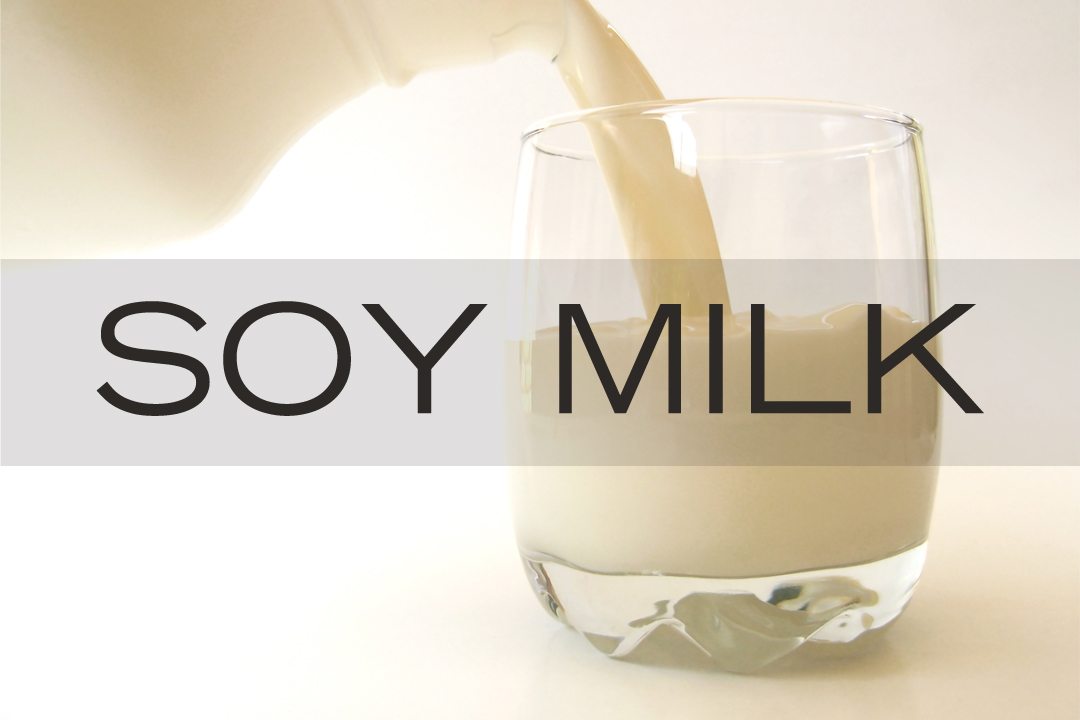
Reducing Food Waste in Foodservice
October 16, 2018 by Doreen Garelick, Dietetic Intern
Our intern Doreen attended a food waste summit for restaurants and compiled these tips to help food service operators redirect…
Nutrition 101
December 5, 2014

Find out how soy milk is made, if it’s truly good for you and how you can use it!
First, soybeans are first blanched in a sodium bicarbonate solution to get rid of their bitter taste, increase digestibility and remove products that can cause gas.
Then, the soybeans are ground in the solution. After grinding, the mixture is decanted to remove any fibers that might cause a chalky mouth feel. The soy milk is then deodorized to get rid of any undesirable smells.
Finally, water is added to standardize the protein content of the soy milk. This is the point when the soy milk can be flavored or fortified (we’ll come back to that later). This is also the point at which the soy milk is homogenized. Homogenization helps the soy milk maintain a uniform consistency by breaking down the fat globules into very fine particles and distributing them evenly throughout.
Soy milk contains about 7 grams of protein per cup, which is pretty close to the 8 grams of protein per cup in cow’s milk. It also contains isoflavones, a plant-based compound known as a phytoestrogen.
While soy milk might not innately be rich in calcium and vitamin D, it is fortified to contain equal amounts or -- even more -- per cup than regular cow’s milk.
This is where you need to be careful. On its own, soy milk can be a very healthful drink, but often additional sugar and flavors are added which can drive up the sugar content and calories. Any variation that is not labeled “Unsweetened” has added sugar, even the “Original” kind.
To make the vanilla or chocolate soy milk, vanilla extract or chocolate syrup is usually added. As such, you should be cautious of the amount of sugar added when selecting your flavored soy milk. For example, if you want the vanilla flavor, it might be worth getting the unsweetened vanilla version to strike a balance.
Soy milk can be used instead of cow’s milk for many recipes – both savory and sweet. When substituting recipes with soy milk, keep in mind that the level of sweetness may be different than cow’s milk, and especially in baking, the crust may brown differently.
Soy milk can also be used instead of cow’s milk over your cereal and in your coffee. To prevent precipitation of soy milk in your coffee, add the soy milk first, and then add the coffee. Keep in mind that the different flavor of soy milk may be even more prominent here given the simple preparation.
Soy milk has also been gaining popularity as a liquid base for smoothies. It adds a nice flavor and helps boost the protein content, which can help keep you fuller for longer -- especially if the smoothie is a meal replacement.

October 16, 2018 by Doreen Garelick, Dietetic Intern
Our intern Doreen attended a food waste summit for restaurants and compiled these tips to help food service operators redirect food waste from landfills.
Nutrition 101

Nutrition 101
September 26, 2018 by Doreen Garelick, Dietetic Intern
Ever notice headlines about rapid weightloss? Dietetic Intern Doreen Garelick looks deeper into a recent eye-catching headline to see if there's any truth behind it.
Connect
 Follow us on Twitter
Follow us on Twitter Friend us on Facebook
Friend us on Facebook Follow us on Pinterest
Follow us on Pinterest Follow us on Instagram
Follow us on Instagram Read our Blog
Read our Blog Watch videos on YouTube
Watch videos on YouTube Watch videos on Vimeo
Watch videos on Vimeo Connect with us on Linkedin
Connect with us on Linkedin Find us on Foursquare
Find us on Foursquare
Tweets by @SPEcertifiedBlog Search
Categories
SPE Certified Newsletter
Sign up for news on the latest SPE-certified venues, events and SPE updates.
We will never share your personal information with a third party.